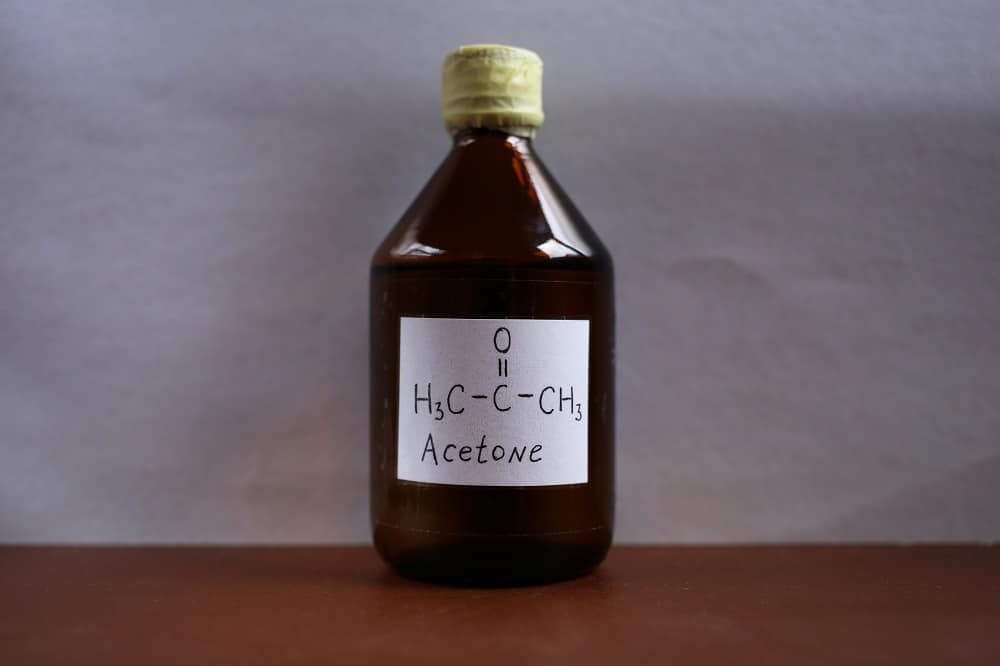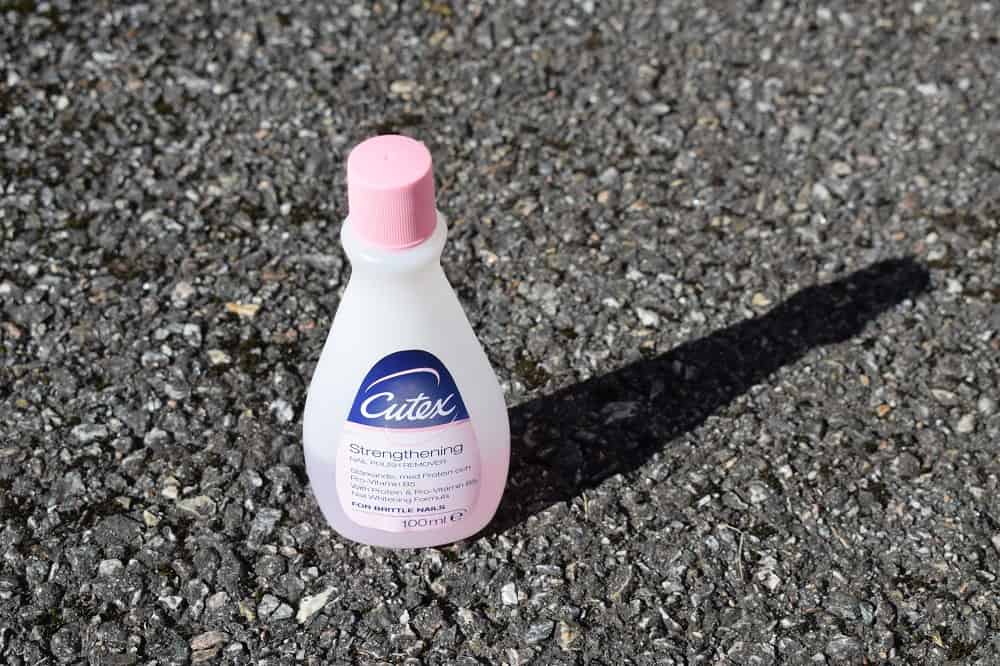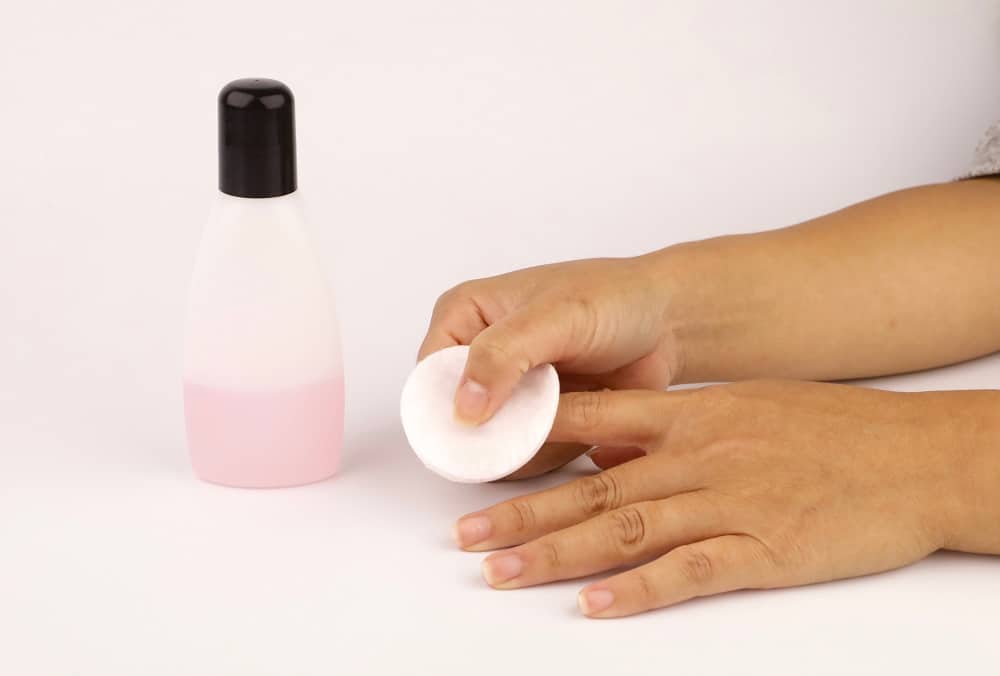Nail Polish Remover vs. Acetone: What’s The Difference?
Many people have the misconception that nail polish remover is actually the same as acetone. The fact is, nail polish remover and acetone are different. We’ll compare nail polish remover vs. acetone below to make it easier for you to understand.
Out with the old and in with the new! Taking off your old, chipped old nail polish may not be as exciting as painting the new colors on, but it shouldn’t be a tedious task.
Yet, why does the nail polish sometimes wipe off as smoothly as a dry-erase marker, while other times, it requires heavy elbow-grease scrubbing and a package of cotton pads? And why do your nails sometimes feel dry and brittle after taking off the polish?
Whether you use nail polish remover or acetone to remove your polish can affect the ease of dissolving the color and the condition of your nails afterward.
Not all nail polish removal solutions are created equal. If you look at the ingredients in the removers, you’ll notice that some contain acetone and others do not.
Nail Polish Remover: With or Without Acetone?
Whether it is better to use non-acetone nail polish remover vs. acetone to take off the color depends on a few factors. Understanding the benefits and drawbacks of each one will help you decide which one is best for you.
Difference Between Acetone and Nail Polish Remover
Acetone is a more effective color-remover, but it is harsher on nails. A non-acetone nail polish remover is gentler on nails but may not work as effectively.
What is Acetone?

Acetone, also called propanone, is a common ingredient in plastics, cleaners, varnishes, paint, and nail polish removers. It can break down the ingredients in nail polish and dissolve the color, making it easy to wipe the color off.
The main advantage to using acetone over nail polish remover is that it is a much more effective and quicker color remover. Simply saturate a cotton pad with acetone or a nail polish remover that contains acetone and rub it on your polished nails. The color will quickly dissolve and wipe off easily without applying too much pressure.
The drawback of acetone is that it can be harsh and punishing to your nails. Just as it is strong enough to dissolve the components in the nail polish, it can also strip away your skin’s natural oils and dry out your nails.
After using acetone, your nails may become cracked, brittle, and weak, and the skin around your nails may be dry and pale.
Another side effect of acetone is that your nails may absorb some pigmentation from the nail polish when it dissolves and discolors or your nails turn yellow!
Nail polish remover without acetone is gentler on your nails and skin and won’t dry them out as much.
What is Nail Polish Remover?

Nail polish remover is a solution of limonene, methyl pyrrolidone, and cetyl acetate that dissolves the color in the nail polish. Acetone may also be added to the remover to make it more effective.
The advantage of nail polish remover vs. acetone is that nail polish remover is gentler and better for your nails and skin than the harsh chemicals of acetone. For dry and brittle nails, nail polish remover without acetone is especially a better option.
The primary drawback of nail polish remover without acetone is that it is not as effective and can take some work to remove the polish. You may need to apply strong pressure to rub the polish off with the polish remover.
Additionally, while a small amount of acetone can easily clean a nail, you may need to use a lot more nail polish remover to remove the same amount of polish.
Should You Use Nail Polish Remover Over Acetone?

Although it may be harder to remove nail polish with a non-acetone based nail polish remover, it is recommended to use the nail polish remover in the following situations:
- You have dry or brittle nails. The nail polish remover will be milder and treat your nails better than the harsher acetone.
- If you suffer from onycholysis, a condition in which the nail separates from the skin underneath, do not use acetone, as it can cause even further damage.
- You frequently wash your hands or work with water which can also be damaging to your nails and make them weaker and more susceptible to the effects of acetone.
- Lighter-colored polish is typically easier to remove, and a non-acetone nail polish remover may be effective enough.
- Although darker polish colors can be harder to remove, acetone can cause the polish color to leach into the nails and discolor them. Removing the dark color with the nail polish remover may be worth trying before resorting to the acetone.
- You wear nail polish often and frequently need to use nail polish remover to change the colors. For regular use, nail polish remover will be much gentler on your nails and skin.
It may be better to use acetone, despite its harshness, in the following situations:
- To remove gel-based polish, soak your nails in acetone. Regular nail polish removers will not work well to remove gel nail polish. The acetone will help dissolve the gel.
To help protect your nails, you can apply some petroleum jelly to your fingers around the nails to minimize the drying effect on your skin. - Remove glitter polish and other colorings that are harder to remove with acetone.
- Although nail polish remover without acetone is recommended for darker colors to avoid acetone from discoloring the nails, sometimes dark polish is difficult to remove with non-acetone polish, and acetone is the most effective solution.
Is It Safe to Use Nail Polish & Remover During Pregnancy?
Acetone vs. Non-Acetone Removers: Pros and Cons
Here’s a breakdown of Acetone vs. Non-Acetone Removers: Pros and Cons that you might find helpful:
Acetone Nail Polish Remover
Pros:
- Quick and Effective: Acetone is powerful and removes polish rapidly, even stubborn types like gel and glitter.
- Widely Available: Most nail polish removers on the market contain acetone, making them easy to find.
Cons:
- Drying Effect: Acetone is known to strip natural oils from nails and skin, leaving them dry and sometimes brittle.
- Harsh on Skin: Frequent use can lead to irritation around the cuticles and nail beds.
- Potential Damage: Overuse may weaken nails over time, making them prone to breakage.
Non-Acetone Nail Polish Remover
Pros:
- Gentler on Nails and Skin: Non-acetone removers are typically less drying, making them better suited for regular use and sensitive skin.
- Less Odor: Non-acetone formulas often have a milder scent compared to the strong smell of acetone.
- Better for Artificial Nails: They are generally safer for removing polish from acrylics or other artificial nails.
Cons:
- Slower to Remove Polish: Non-acetone removers usually require more time and effort, especially for thicker polishes.
- Less Effective on Tough Polish Types: They may struggle with removing gel, glitter, or other more resistant polishes.
- Less Widely Available: Some non-acetone options can be harder to find in stores.
This structure can guide readers in deciding which remover best fits their needs!
Final Words
Whether to use nail polish remover or acetone depends on various factors. Acetone is a more effective color-remover, but it is harsher on your nails. Non-acetone nail polish remover is gentler on your nails but may not work as effectively.
If you use acetone, moisturize your nails and nail beds to keep them healthy and mitigate the harsh effects.
Some nail polish removers contain acetone, enough to help dissolve the polish but not as harsh to damage your nails. That may be the best compromise—let the nail polish remover and acetone combine their strengths and disadvantages and work together.
Related Topics:





